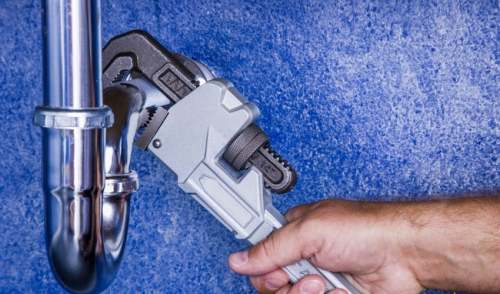{article.name}
Social Media Links
How to Prevent Pipes From Freezing
Are your customers worried about frozen pipes? Here are some tips to reassure them they can win the battle against Mother Nature.
Posted by: Jennifer Goodman

- Share this:
- Share on Facebook
- Pin on Pinterest
- Tweet on Twitter
As unusually cold weather plagues large parts of the country, homeowners from South Carolina to Michigan (and even Texas) are worried about frozen, busted pipes flooding their homes, causing thousand of dollars of damage.
“Water damage from busted, frozen pipes can be devastating in more ways than just the flooding,” says Jeff Dudan, CEO and founder of North Carolina-based remediation company AdvantaClean. “There can be structural damage, plus an immediate potential for deadly mold. A crack in a pipe no longer than the cuticle on your ring finger can dump hundreds of gallons of water into a home, creating more than one disaster.”
Home builders can help reassure their customers that their homes are safe with some strategies for keeping plumbing running during cold weather, says Dudan. Here are the company's top tips to protect pipes:
• Remove hoses from outside faucets- if you leave hoses connected, with water still in them, there’s no place for water from the faucet, or water line to drain. The trapped water freezes and expands creating a crack in the line INSIDE the wall of your, spewing water everywhere. Wrap an insulated cover, towel, foam, or even newspaper around the faucet, cover in plastic, then tape to hold in place.
• Insulate exposed water lines - you can buy insulated sleeves from the hardware store which slip easily around exposed pipes in the garage, attic, basement, or outside. These areas are more susceptible to freezing.
• Seal leaks or cracks around pipes in the bathroom or kitchen-cold air can flood through the tiniest crevices. Insulate, or caulk around pipes to keep them from freezing
• Leave bathroom/kitchen cabinet doors open- this will allow warm room air to circulate around the pipes when icy weather invades. Also, let faucets drip to reduce pressure
• Keep the thermostat at the same temperature day and night when outdoor temperatures plummet
IF YOUR PIPES FREEZE…
• Turn on all faucets to find out which ones are working- a small trickle of water from one faucet, while others are gushing, is a good indicator of a frozen line
• Work from the faucet, back, to check for ice blockage- run a hair dryer, or heat gun back and forth along the pipe, warming it gradually. Never put a heat source directly on the pipe, especially if it’s PVC. It could rupture the pipe. Never use an open flame.
• Pour a tablespoon of salt down the drain, but do not add water. The sudden temperature change could crack the pipe.
• Check for leaks-if you see any leaks, in any pipes, shut off the main water valve to the house, and close all faucets.
Sign up for our Email List
Stay updated with all our latest posts, products and offers! Just enter your information below.


Comments